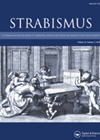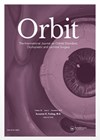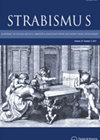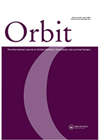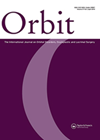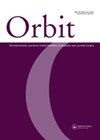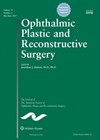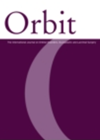
Journal Reviews
Recession and resection surgery in TED
The aim was to investigate changes in ocular ductions in thyroid eye disease (TED) patients undergoing recession in comparison to recession / resection surgery. This was a retrospective study of 119 patients with inclusion of 102 eyes in final analysis....
OCT-A imaging in Grave’s orbitopathy and orbital decompression
In this case series of 12 patients and 24 orbits, the authors describe the changes in the optic nerve and peripapillary blood vessel density in patients with moderate to severe Grave’s Orbitopathy (GO) undergoing orbital decompression. The patients undergoing orbital...
Colour Doppler imaging before and after orbital decompression in thyroid eye disease
In this prospective, uncontrolled study euthyroid patients with moderate to severe inactive thyroid eye disease underwent colour Doppler imaging before and after orbital decompression. Patients with dysthyroid optic neuropathy, corneal breakdown, systemic disease (diabetes, cerebrovascular accident, cardiovascular and peripheral vascular...
Use of bovine pericardium for tendon elongation
A retrospective analysis was conducted on all patients treated in one centre with tendon elongation using bovine pericardium (BP) to examine outcomes and long-term safety. The study included 60 patients; 27 unilateral and 33 bilateral cases. Follow-up of one to...
Is exenteration helpful in invasive fungal sinusitis?
Invasive fungal sinusitis is a potentially lethal disease that causes painful orbital apex syndrome with ophthalmoplegia and visual loss. The mechanism of ophthalmoplegia and visual loss is not clear, and neither is the role of radical surgery-orbital exenteration. The authors...
IgG4 related orbital disease
This retrospective study was done to determine the prevalence of IgG4 related orbital disease (IgG4ROD) in patients who previously had biopsies for suspected idiopathic orbital inflammatory disease (IOID) and / or orbital lymphoproliferative disease (OLD). The charts and slides of...
Managing orbital compartment syndrome
This experimental study using cadaveric models was done to evaluate the surgical technique effective in relieving orbital compartment syndrome. Twelve cadaveric orbits were injected with blood analogue stained with fluorescein. Pressure probes were inserted in superotemporal (advanced 40mm into orbit)...
Orbital abscess following posterior subtenon steroid injection
The authors report a case of orbital cellulitis following posterior subtenon injection of triamcinolone acetonide. A 57-year-old male patient with a background of complicated cataract surgery underwent vitrectomy with explantation of dislocated intraocular lens and insertion of anterior chamber lens....
Radiologic characteristics of cavernous venous malformations
This study is a retrospective review of cases with a preoperative radiologic diagnosis of cavernous venous malformations (CVMs) over 30 years. The aim of this study was to define imaging characteristics of CVMs, which will help differentiate these lesions from...
Bioengineered human tissue
This is a literature review of the current status of tissue engineering related to ocular and oculoplastic reconstructive surgery. The authors describe the process of bioengineering for tissue reconstruction. The aim is to reproduce functional tissue by the use of...
AlloDerm for correction of lower lid retraction
This is a retrospective review of 95 eyes of 54 patients undergoing orbital decompression for Graves’ orbitopathy. All patients had a swinging eyelid approach across the whole of the lower lid. Thirty-six eyes also had insertion of a 0.3mm thick...
Bisphosphonates can cause orbital inflammation
The authors describe four patients with bisphosphonate induced orbital inflammation and review a further 25 cases in the literature. Intravenous zoledronate was the most common precipitant (76% of cases) with the mean time until onset of inflammation being three days...

